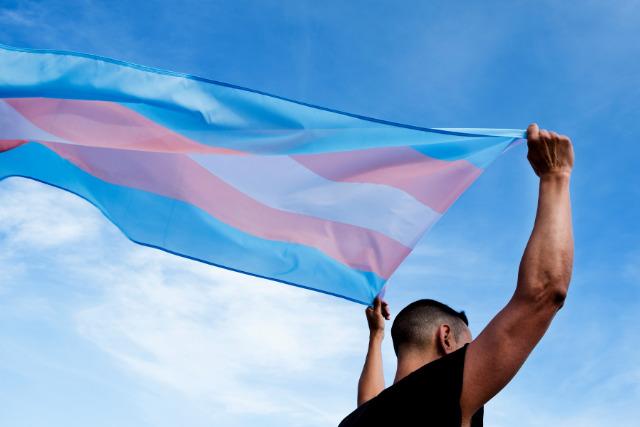Understanding Gender Identity, Pronouns, and Expression: A Comprehensive Guide
Gender identity, pronouns, and expression are complex and nuanced topics that have gained increasing attention in recent years. This guide aims to provide a thorough understanding of these concepts, their importance, and how to navigate them respectfully in various social contexts.
What is Gender Identity?
Gender identity refers to a person's deeply held internal sense of their own gender. It's important to note that gender identity is distinct from biological sex assigned at birth. While many people identify with the gender that aligns with their assigned sex (cisgender), others may identify differently (transgender or non-binary).
Key points to understand about gender identity:
- It's personal and subjective: Only an individual can determine their own gender identity.
- It exists on a spectrum: Gender isn't limited to just male or female.
- It can be fluid: Some people experience their gender identity as changing over time.
Common gender identities include:
- Cisgender: Identifying with the gender assigned at birth
- Transgender: Identifying with a gender different from the one assigned at birth
- Non-binary: Identifying outside the traditional male/female binary
- Genderqueer: A broad term for gender identities that are not exclusively masculine or feminine
- Agender: Not identifying with any gender
Understanding Pronouns
Pronouns are words used to refer to people in place of their names. In English, common pronouns include he/him, she/her, and they/them. Using someone's correct pronouns is a crucial way to show respect for their gender identity.
Why pronouns matter:
- They affirm identity: Using correct pronouns validates a person's gender identity.
- They promote inclusivity: Normalizing pronoun sharing creates a more welcoming environment for all.
- They reduce assumptions: Not everyone's gender identity is immediately apparent.
Tips for using pronouns respectfully:
- Ask politely: "What pronouns do you use?"
- Share your own: Introduce yourself with your pronouns to normalize the practice.
- Apologize and correct yourself if you make a mistake.
- Use gender-neutral language when unsure (e.g., "they" or a person's name).
Gender Expression
Gender expression refers to how a person presents their gender externally through clothing, hairstyles, mannerisms, and other aspects of appearance. It's important to recognize that gender expression doesn't always align with gender identity or sexual orientation.
Key aspects of gender expression:
- Clothing choices
- Hairstyles and grooming
- Mannerisms and body language
- Voice and speech patterns
- Name and pronoun usage
It's crucial to remember that gender expression is personal and can vary widely. Someone's expression doesn't necessarily indicate their gender identity or sexual orientation.
The Importance of Respect and Inclusivity
Creating an inclusive environment where people feel comfortable expressing their gender identity is essential. Here are some ways to foster respect and inclusivity:
- Educate yourself: Stay informed about gender issues and terminology.
- Listen and learn: Be open to hearing others' experiences and perspectives.
- Avoid assumptions: Don't make judgments based on appearance or stereotypes.
- Use inclusive language: Opt for gender-neutral terms when addressing groups (e.g., "everyone" instead of "ladies and gentlemen").
- Advocate for others: Speak up against discrimination and support inclusive policies.
Navigating Gender in Various Settings
Understanding and respecting gender identity, pronouns, and expression is important in various contexts:
Workplace
- Implement inclusive policies and training programs.
- Use gender-neutral language in official documents and communications.
- Provide gender-neutral restroom options when possible.
Education
- Create a safe and supportive environment for students of all gender identities.
- Include LGBTQ+ topics in curricula to promote understanding.
- Address bullying and discrimination promptly.
Healthcare
- Train staff on gender-sensitive care and communication.
- Use patients' preferred names and pronouns in records and interactions.
- Offer comprehensive care that addresses the specific needs of transgender and non-binary individuals.
Supporting Loved Ones
If someone close to you comes out or shares their gender identity:
- Listen without judgment.
- Offer support and ask how you can help.
- Respect their privacy and don't out them to others without permission.
- Educate yourself to better understand their experiences.
- Be patient and understanding as they navigate their identity.
The Legal Landscape
Legal recognition and protection for gender identity vary widely across jurisdictions. Some key areas of focus include:
- Non-discrimination laws in employment, housing, and public accommodations
- Gender marker changes on official documents
- Access to gender-affirming healthcare
- Protections for transgender and non-binary students in schools
It's important to stay informed about local and national laws affecting gender identity rights.
Conclusion
Understanding and respecting gender identity, pronouns, and expression is crucial for creating a more inclusive and equitable society. By educating ourselves, using inclusive language, and fostering supportive environments, we can all contribute to a world where everyone feels free to express their authentic selves.
For Further Reading
- GLAAD Media Reference Guide - Transgender
- National Center for Transgender Equality: Understanding Transgender People - The Basics
- Human Rights Campaign - Gender Identity & Pronouns
- American Psychological Association - Guidelines for Psychological Practice with Transgender and Gender Nonconforming People

